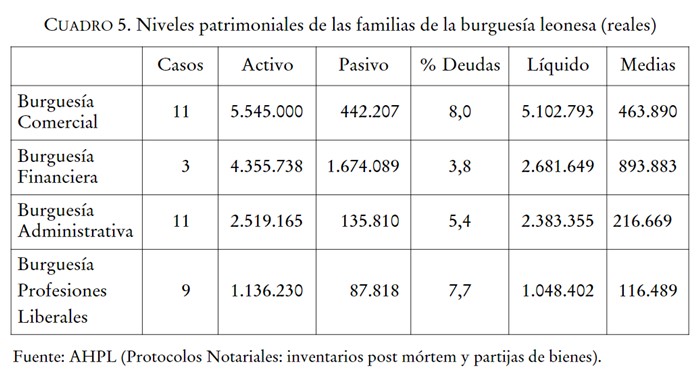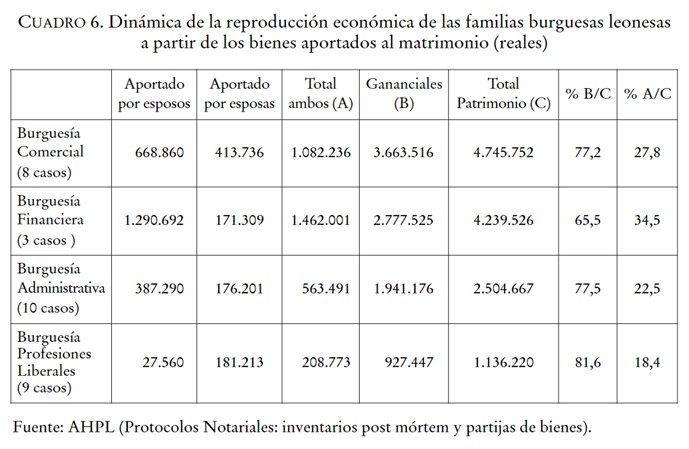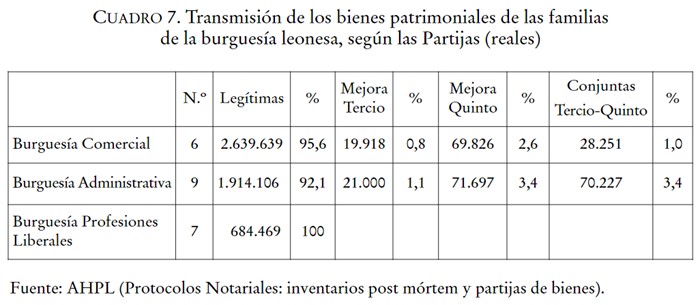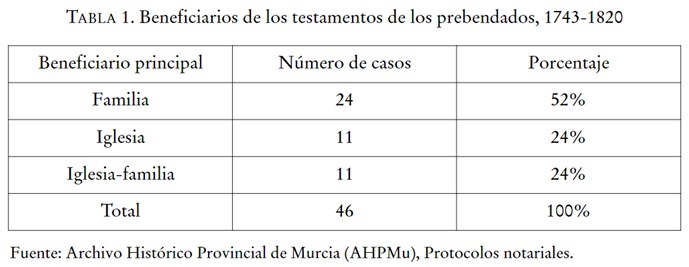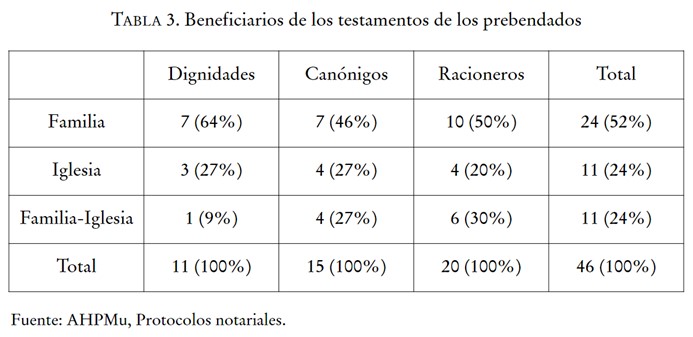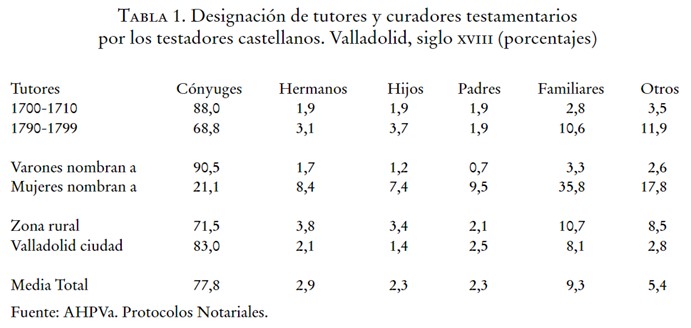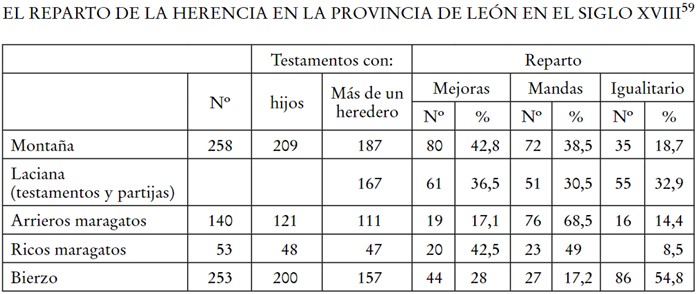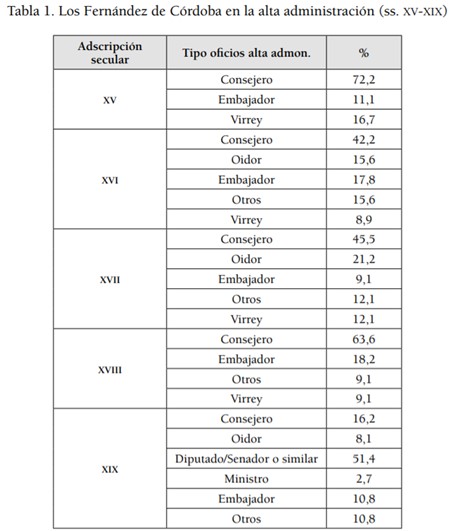Resource showing the geographical distribution of inheritance systems according to their degree of equal distribution or accumulation in a single heir
Reproducción social
Resource that shows the patrimonial level of the different bourgeoisies of the city of León between the Ancien Régime and the consolidation of the liberal State
Resource that shows the economic contribution of the bride and groom to marriage as a technique of social and material reproduction of the León bourgeoisie in the 18th century and first half of the 19th century
Table showing the mentality of social reproduction through the distribution of property through inheritance in the city of León. The profiles dealt with are the bourgeoisie in its facets of merchants, administrators and liberal professionals during the 18th century and the first half of the 19th century
Table showing the importance of the family for the high clergy of the cathedral of Murcia at the time of testament: family awareness, mentality and strategies of patrimonial concentration
Table showing family concerns according to the group to which they belonged within the chapter of the cathedral of Murcia. Social ascent as a source of family awareness
Resource showing the Salamancan income from the main way in the Crown of Castile to become a clergyman: the chaplaincies
Resource showing the mentality of testators when choosing the guardians of assets inherited by minor children
Table analysing the distribution of inheritance according to the socio-economic and geographical structure of the province of León in the 18th century. The unequal inheritance in mountain areas stands out
The resource shows the evolution of the Fernández de Córdoba lineage in the high administration of the monarchy. Over the centuries, they went through different stages, from a great influence in the 15th century, a decline with the arrival of the Bourbons in the 18th century and finally their reconversion into parliamentary deputies in the 19th century

